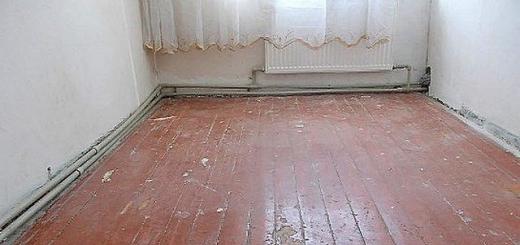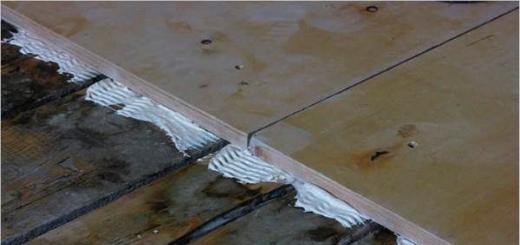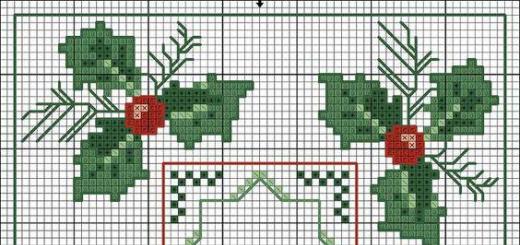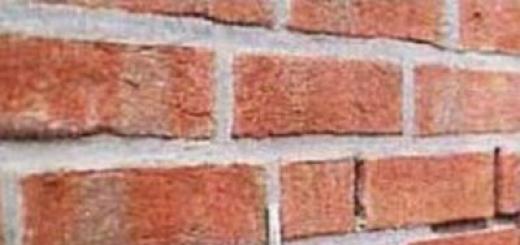A comfortable hammock will always be a favorite place to relax for the whole family. How nice it is to relax in the fresh air after working in the garden and swing in a comfortable hammock among tall trees. And you don’t have to buy it in a store, since such a piece of dacha exterior can be easily made with your own hands.
Types of hammocks and their features
The hammock first appeared among the Indians of the Caribbean islands. Since it was impossible to sleep on the ground, enterprising aborigines came up with such a device as a hammock. Seeing such a comfortable and safe bed, the Spaniards immediately adopted it, and later it was used by numerous residents of different countries. Naturally, over time, the hammock has been significantly modified and modified, and now we can choose any hammock design at our discretion: fabric, wicker, wood, etc.
According to their design, hammocks can be:
Types of hammocks
- The Brazilian hammock is a modification of the Mexican design and is intended for people who are accustomed to maximum comfort. It can be suspended on ropes if you use special straps and a rigid cross beam. The width of such a product reaches two meters. This is a rather expensive and difficult design to manufacture, since certain loads from hanging points are “distributed” along the fabric much more difficult than along the mesh, so installing such a product requires a large number of branches and drawstrings.
- A Mexican hammock can be made of fabric or ropes. Has no hard parts. Since it consists of only a piece of fabric and a few strings for stretching, it can be carried with you in a bag, backpack or backpack. The disadvantage of such a product is the need for a large amount of fabric (about 3 meters long and 1.5–2 meters wide). To hang it between the supports, a large distance is required. It cannot be made double, since you will need a fairly large piece of fabric that will roll up into a tight “cocoon”, which will make staying in it not entirely comfortable. You can stay in such a hammock for no more than two hours, since then your back starts to hurt and there can be no talk of comfort.
- A Vietnamese or Malay hammock is made from a strong fishing net and hung on several support branches with varying degrees of load. Since this design was not very convenient, residents of Asian countries decided to supplement it with transverse bars - traverses. This is a comfortable bed that can easily be made into a double bed. You can stay in such a hammock for an unlimited amount of time without experiencing painful inconvenience.
- The Brazilian sitting hammock is a smaller and simplified design that is mounted on a trapezoidal suspension. This hanging chair can be made with a semi-rigid structure or a completely rigid one. That is, the hammock-chair can be completely wicker from natural or artificial rattan.
Photo gallery: hammocks of various types and designs
 The wicker hammock chair has a stable wooden frame
The wicker hammock chair has a stable wooden frame  A rocking hammock on a metal frame can be installed anywhere
A rocking hammock on a metal frame can be installed anywhere  A wooden hammock chair will perfectly decorate a summer cottage or a children's corner
A wooden hammock chair will perfectly decorate a summer cottage or a children's corner  You can make a bright and spectacular knitted hammock chair with your own hands
You can make a bright and spectacular knitted hammock chair with your own hands  Fabric hammocks are stronger than wicker ones
Fabric hammocks are stronger than wicker ones  A hanging fabric hammock with two fastenings can be taken with you on a hike.
A hanging fabric hammock with two fastenings can be taken with you on a hike.  Frame hammocks can be of various shapes and any color
Frame hammocks can be of various shapes and any color  Sleeping in a hammock is not only comfortable, but also useful
Sleeping in a hammock is not only comfortable, but also useful  Since the hammock is used in hot weather, it is very important that the material is environmentally friendly and has good air permeability
Since the hammock is used in hot weather, it is very important that the material is environmentally friendly and has good air permeability  It is easier to maintain balance in a hammock without cross bars
It is easier to maintain balance in a hammock without cross bars  If there are no suitable trees on the site, hammocks can be placed in the gazebo
If there are no suitable trees on the site, hammocks can be placed in the gazebo  Wicker hammocks will decorate your home and street
Wicker hammocks will decorate your home and street
What is the best material to make a hammock from: the pros and cons of fabric and mesh
Regardless of the design and type of hammock, you need to know a few general rules that will help in making a comfortable and durable product.
- Fabric for making a hammock. Properly selected fabric will significantly extend the service life of the product and increase its strength characteristics. To make a hammock durable and reliable, you need to choose dense fabrics such as canvas, tarpaulin, teak, denim or camouflage. Materials made from synthetic fibers are no less durable, but they do not allow air to pass through, so being in a hammock in the hot summer will not be entirely comfortable.
The fabric for a hammock should be as durable as possible, but at the same time allow air to pass through well.
- Ropes or ropes for wicker products are also selected based on their strength, practicality and comfort. It is best to purchase products made from cotton threads. It is more convenient and easier to work with such ropes, they knit into knots and weaves more reliably and tightly, and are also pleasant to the body.
It is best to purchase ropes made from natural threads
Regardless of what you choose to make your hammock (fabric or ropes), you should not settle for cheap synthetic materials. If we talk about what is better: fabric or woven rope mesh, then it all depends on the preferences of the owners of such a design. The fabric is denser and less breathable, so even in cool weather this hammock will be comfortable and cozy. The mesh product is ideal for hot and sweltering summers. Blown from all sides by even a small breeze, a wicker hammock will create a wonderful bed for relaxation.
If we talk about the complexity of making a hammock from fabric, then making it will be much easier and faster than weaving a fishing net yourself or learning the macrame technique. Therefore, you can simply buy a ready-made durable mesh, which will serve as the basis for making a rope hammock.
Preparing to make a hammock: drawings and diagrams
Before you begin, you need to know some rules for making a hammock structure.

We will sew a fabric hammock measuring 3x2.2 meters. For this we need a durable mattress teak, calico or camouflage fabric. To make the hammock comfortable and roomy, we focus on an adult (male). Therefore, we use fabric across the entire width.
We use wooden parts as a frame for the hammock. It is best to purchase a 3.6 meter wide fabric, but you can take two 1.4 meter pieces and simply sew them together. If you take canvas, you need to take into account that it will be very difficult to sew such material on a regular sewing machine.
To fasten the structure, we need a strong rope or clothesline made of cotton fibers.
Material calculation and tools for work
To make various options for fabric hammocks, we will need certain materials and tools.
Fabric hammock with crossbars
Materials:
- durable fabric - 3x2.2 m;
- padding polyester - 50 cm;
- sling - 5.2x3 cm;
- nylon halyard - section 4 mm;
- wooden block - section 4 mm;
- sandpaper;
- acrylic paint.
Tools:
- metal ruler - meter;
- chalk for marking fabric;
- wood hacksaw;
- chisel;
- small brush;
- scissors;
- basting and regular needles;
- centimeter;
- sewing machine;
- iron.
Ironed parts are thinner, easier to stitch and there is no need to hold the fabric with your hand.
Stages of making a hammock
- On the wrong side of the material we draw two rectangles measuring 1.5x2 meters. We cut out the patterns and fold them right sides to each other.
- We retreat 1.5–2 cm from the edges and sew the short sides of the fabric on both sides. We turn the workpiece inside out. The lower part will serve as the back, and the upper part will serve as the face. Iron seam allowances on one side.
- We sew the sling onto the long part of the part with a 5 cm indentation along the edges. The sling is laid along the back along the entire length, and on the front side at a distance of 35 cm from the seam. Next, we wrap the lower part of the workpiece onto the upper one, without cutting the sling.
- We prepare 4 pieces of sling, 70 cm long. We sew them to the indicated fastening points, facing the back. Hem the edges to create holes for the crossbars.
- We sew the long side sides of the product along the front side in increments of 30 cm from the edge. We cut out strips of padding polyester measuring 25x125 cm and put them in the prepared pockets. Then we fold, baste and stitch the edges so that we get some kind of rolls on the sides of the hammock on the long sides. In order to secure the padding polyester well, we stitch the pockets using the quilting method in several places.
- We saw a wooden block into two equal parts. We mark approximately 2 cm from the two edges and make a notch about 1 cm in size. Use a chisel to remove excess shavings. We clean the sawn parts with sandpaper and paint the bars with acrylic paint. Let it dry.
- We retreat 5 cm from the two ends of the product and sew drawstrings to thread the crossbars into them. By threading the bars, we evenly assemble the base of the hammock on them.
- We tie a nylon halyard to two crossbars, so that the knots are in the grooves.
Fabric hammock with eyelets
You can make a slightly different modification of a fabric hammock on grommets with wooden posts.
Materials and tools:
- durable material - 2.7–3 m;
- eyelets - 22 pcs;
- tools for inserting them;
- rope 35 m long, diameter 6 mm;
- large metal rings;
- electric drill and drill bit 12 mm;
- beams 30x50 - their length should correspond to the width of the hammock;
- sewing machine;
- chalk for marking fabric;
- scissors.
Manufacturing stages
- We measure a piece of fabric and cut it 2.7 meters. We bend the edges by about 6 cm and stitch them on a typewriter. Then we iron them, fold them again and stitch them.
- We mark with chalk on the fabric the width of the places where the eyelets are attached with the same spacing. We will get 11 pieces on each side.
- We cut small holes in the marked places and attach eyelets to them with a special tool. Our hammock canvas is ready.
- For spacers, we take 2 bars with holes drilled in them at the same distance as the eyelets on the hammock. They will keep the fabric from folding under the weight of people.
- We pull the ropes through the holes.
- We install the hammock straps. For this we make a special frame. But you don’t have to do it. To do this, we attach a metal ring to the hook, lay the hammock on the floor and secure it with a heavy press.
- We make a spacer on the frame. We pass each sling through the grommet, and then through the hole in the spacer and the ring. We return the rope back. After completing all the work, we tie its ends. We braid the ring with the remaining ends of the slings. We do the same on the other side of the hammock. We hang it on supports.
We sand all wooden structural elements and then coat them with an antiseptic. After this, they can be coated with varnish or paint.
Video: how to make a fabric hammock
Hammock swing
Such a small hammock for sitting can be easily made from a piece of fabric and a children's metal hoop (hula hoop).
Materials and tools:
- durable fabric - 3x1.5 m;
- hoop with a diameter of 90 cm;
- padding polyester - 3x1.5 m;
- durable grosgrain ribbon - 8 m;
- sewing machine;
- scissors;
Stages of work
- We cut out two equal squares from fabric, measuring 1.5 x 1.5 meters.
- We fold each one four times.
- To make a circle out of it, draw a circle from the central corner with a radius of 65 cm and cut it out. We also do the second circle.
- We mark the holes for the slings: fold the circle in four and iron it so that the folds are guidelines. The first pair of lines will be located relative to the bend at an angle of 45 0, the second - 30 0.
- We also cut out the padding polyester.
To make identical slits on both circles, connect the pieces of fabric and pin them together
- We lay the padding polyester between the two parts of the material.
- We sew two identical covers on a machine. Then we sew them together, placing a metal hoop between them.
- We tie a grosgrain ribbon to the hoop in four places, cutting it into 4 equal parts.
The ribbon can be stitched or simply tied with a sea knot
- We tie the free ends to a thick tree trunk or other frame at the required height.
We have created a comfortable and small hammock that does not require several support posts.
Video: how to make a hammock chair
Wicker hammocks have been known for a very long time, since in our country they were used everywhere, unlike fabric ones. For the most part, their base resembles an ordinary fishing or volleyball net, which is suspended between two trees.
Consider a hammock 2.5 meters long and 90 cm wide.
Materials and tools:
- two wooden slats thickness - 1.5 m;
- ropes or thick rope 170 meters - diameter 8 mm;
- scissors;
- electric drill and drill bit;
- brush;
- varnish or paint;
- antiseptic;
- metal rings - 2 pcs.
Weaving stages
- We drill holes in the planks in increments of 4–5 cm.
- We cut off 20 meters of rope, which will be used for fasteners. And we cut 150 meters into equal parts of 6 meters.
- We fasten each rope with a loop and tie a knot on the bar.
- We choose any weaving pattern with a cell size of at least 7 cm.
- Having finished weaving, we attach the ends of the rope with knots to the second plank and make fasteners for the two planks. For this we use metal rings.
The ropes are secured to a wooden plank using loops and knots
- We check the strength of the product and attach it to the supports.
Video: how to make a wicker hammock
How to hang a hammock
In order to hang such a hammock on two trees, it is necessary to stuff special support bars onto the trunks. They will prevent the halyard from sliding down.
But it is best to use metal or wooden poles driven in at a certain distance from each other. Special hooks must be welded to the pillars at a height of about 1.5 meters. If these are wooden supports, then you can make special hoops with hooks.
Wooden frame for hammock
You can make your own wooden support frame for a portable hammock. To make such a design we will need:
- wooden beam - 80x80 mm;
- board - 100x30 mm;
- studs, M10 bolts and nuts;
- hooks for hanging a hammock;
- sander;
- electric circular saw;
- electric drill;
- keys;
- paint or varnish;
- antiseptics.
Assembly steps
We will make the lower support from two 3-meter bars and two 1.5-meter cross bars. Two side mounting beams are made of 2-meter timber and two 1.45-meter supports.
- First we make the jibs. This is the side part of the stand on which we will hang the hammock using hooks. To do this, we fasten the beam and the stop together and saw it off at the bottom so that we get a vertical, but strong and stable part with a camber at the upper points of at least 4 meters.
The finished structure must withstand not only the vertical load created by the weight of a person, but also the overturning load
- We install and fasten the side elements between 2 longitudinal bars. They should be in a mirror image of each other.
The width of the legs must be more than 1 m
- We make the crossbar from two boards, 1.3 and 1.5 meters, and place them one on top of the other to ensure maximum stability for our structure. At the end, we fasten the longitudinal bars with transverse strips at a distance of 60 cm from each end.
To assemble the structure, you can use bolts or screws
- We sand all the wooden parts with a sander, cover them with an antiseptic and let them dry. Then we cover it with paint or varnish.
Second frame option
The second design is more convenient and requires the same materials and tools as the first option.
In this case, we make the jib in a slightly different way, and also add a handle with which you can easily rise from the hammock.
Metal structure
Using the same principle, if desired, you can weld a metal support for a hammock from profile pipes of square or round cross-section.
Video: metal hammock stand
If you follow the correct technique for making a hammock, you will get a comfortable product where you can relax on hot summer days. A fabric or wicker hammock is an excellent option that will replace bulky, expensive garden furniture, and thanks to their mobility, such a structure can be hung in any convenient place in the garden.
The Indians of South America first came up with the idea of creating a hammock with their own hands, then the item was brought to Europe by sailors who visited this continent. The invention was made by the Indians from tree bark, so its name comes from the word “hamak”. This was the name of the tree used to create hammocks. This comfortable "furniture" was originally used in the form of wicker nets on ships instead of bunks.
- a hammock chair where you can sit and drink tea;
- swing hammocks, adored by small children;
- hammocks with a canopy that protect from sun rays and bad weather.
- metal rings - 2 pcs;
- bars - 2 pcs;
- thin synthetic rope - 4 m;
- durable synthetic rope.
- weave a mesh of the required size;
- thread the ropes in pairs through each hole in the second block;
- place the block closer to the nodes in the last row;
- pass the ends of the ropes through the second ring and tie them in knots;
- insert a rope with a smaller diameter around the edges of the hammock;
- cut 2 pieces of 2 m each to thread them through the cells along the edges of the mesh;
- secure the ends of the ropes on each side with double knots.
- tarpaulin;
- camouflage;
- mattress fabric;
- canvas, etc.
- tape measure;
- stationery knife;
- scissors;
- planks;
- cord;
- cotton rope
- hacksaw;
- scissors;
- needle;
- threads;
- pins;
- chisel;
- iron;
- pencil;
- ruler;
- measuring tape;
- sandpaper.
- dense fabric measuring 3.0x2.2 m;
- strong sling measuring 3.0 x 5.2 m;
- synthetic padding filler 0.5 m thick;
- a wooden block whose diameter is 4 cm;
- nylon halyard 4 mm wide;
- acrylic paint to match the fabric.
- on the wrong side of the canvas, draw 2 rectangles measuring 200x150 cm;
- cut out the blanks and fold them with their front sides facing each other;
- sew the short sides of the fabric along both edges of the future hammock, first retreating 3 cm from the border;
- turn the product inside out so that the bottom cut serves as the back, and the top cut serves as the front side;
- iron seams on fabric;
- making a 5 cm indent from the edge of the fabric, sew a sling along each of the long edges of the workpiece;
- sew the harness along the entire length along the edge of the fabric from the wrong side, and from the front side - with an indentation from the residual seam equal to 30 cm;
- prepare 4 pieces of sling 70 cm long, and then stitch all the pieces to the hammock attachment areas;
- sew the product from the front side, retreating 30 cm from the edge;
- cut a strip of padding polyester into strips measuring 125x25 cm;
- put the strips into the resulting pockets;
- tuck the edges of the product, fold them and stitch them, getting rolls;
- quilt pockets with filling in 4-5 places to secure the padding polyester in them;
- cut the wooden beam into 2 parts at a distance of 1 cm;
- make indentations for the ropes using a chisel;
- clean the slats with sandpaper and paint;
- make lines for “drawstring loops” at the ends so that the hammock can be attached to a block of wood;
- thread the product onto the crossbar through the loops, and then tie a nylon halyard to them to secure the knots in the recesses.
- Classic hammock bed(woven or fabric on slats with two hanging points);
- Moroccan hammock cocoon, fabric, without strips. Thanks to its soft design, it completely wraps the body of a lying person. Suspended at two points;
- Hammock swing(suspended at two points on a special structure that allows it to swing);
- Hanging rocking chair(has one suspension point at the top).
- textile– it is better to take something dense and natural (jeans, tarpaulin, canvas), although it is heavier than synthetics and is inferior to it in durability, but it is much more pleasant to the touch and allows air to pass through;
- ropes, capable of withstanding a load of 150-200 kg, they can be made of any material, but natural ones are easier to knit, they slip less and are easier to work with;
- wooden sticks, with a diameter of 30-50 mm, which are sold in any hardware store;
- also, depending on the design and complexity of the model, you may need padding polyester or other soft filling, eyelets (metal or plastic cylinders of two parts with caps, which are used for edging holes in the fabric).
- a sewing machine that will sew thick fabric in several layers; it must be adjusted and thick needles installed;
- chalk for marking and measuring tape;
- square and ruler;
- sharp and large cutting scissors.
- leave the end of the cord 70 cm long;
- after which we thread the main part of the rope into the first loop;
- put 70 cm on it, bend it, return to the second loop;
- you should get a large 70-centimeter loop of cord;
- We repeat the procedure until the end, where we also leave 70 cm of rope;
- we tie the long loops together, leaving about 10 cm;
- From this residue, we form a loop, which will be attached to the supports.
- Fold the edge by about 15 cm, lay a double stitch at a distance of slightly more than 1.5 times the diameter of the cutting used. Having retreated from the resulting seam at a distance slightly larger than the diameter of the eyelet, lay another double line. In the resulting dense area, closer to the edge of the hem, we insert the fittings for the loops in increments of 10-15 cm (the slings will be threaded through them). The second edge is also processed;
- If it is not possible to purchase eyelets, then loops made of thick fabric or a luggage belt are sewn to the edge of the fabric, of such a size that the strap can be threaded through them freely. They should be done as often as possible in increments of 5-10 cm.
- the already familiar strong wooden planks;
- cord, preferably natural;
- drill.
- two beams for the bases, approximately 2.5 meters each;
- two beams for posts approximately 1.8 meters;
- two beams for cross supports approximately 1.2 meters.
- 2 thick strong ropes 3–4 m long.
- 2 carbines;
- 2 thick strong ropes 0.5 m long;
- a rectangular piece of fabric (approximately 3 × 1.5 m or less);
- 2 thick strong ropes 3–4 m long or 2 lashing straps 1–1.5 m long with loops at the ends.
- a rectangular piece of fabric (about 2 × 1 m or more);
- threads;
- needle or sewing machine;
- 2 thick strong ropes 4–5 m long.
- a rectangular piece of fabric (approximately 2.5 × 1 m or more);
- threads;
- needle or sewing machine;
- scissors;
- 32–36 large eyelets;
- drill;
- 2 metal rings;
- 2 strong ropes 10–15 m long;
- 2 carbines - optional;
- 2 strong ropes 3–4 m long or 2 lashing straps 1–1.5 m long with loops at the ends.
- a rectangular piece of fabric (approximately 2 × 1 m);
- 30 not too thick ropes 50 cm long - optional;
- stationery pins - optional;
- threads;
- needle or sewing machine;
- 14 beads - optional;
- scissors;
- 2 wooden slats along the width of the fabric for the hammock;
- 24 small nails;
- hammer;
- 2 metal rings;
- 2 strong ropes 15 m long;
- 2 carbines;
- 2 tie straps 1–1.5 m long with loops at the ends.
- drill;
- 2 wooden slats 1 m long;
- 10 braided cords 9–10 m long;
- 2 metal rings;
- 2 carbines - optional;
- 2 tie-down straps 1–1.5 m long with loops at the ends or 2 strong ropes 3–4 m long.
- padding polyester;
- scissors;
- 1 metal hoop with a diameter of 95–100 cm;
- threads;
- 1 strip of fabric 3 m long and 20 cm wide;
- needle;
- stationery pins;
- square piece of fabric (approximately 1.5 x 1.5 m);
- 4 tie-down straps, approximately 3 m long.
- drill;
- nails or screws;
- hammer or screwdriver;
- a rectangular piece of fabric (sizes will be stated in the description);
- threads;
- needle or sewing machine;
- drill;
- 3 thick wooden slats approximately 80 cm long;
- 2 thin wooden slats approximately 90 cm long;
- nails or screws;
- hammer or screwdriver;
- 2 thick strong ropes approximately 1.5 m long;
- 3 thick strong ropes approximately 2.5 m long.
- 16 braided cords 8–9 m long.
- Strong clothesline (approximately 1 cm thick);
- Ruler;
- Scissors;
- Durable wooden planks (2 pcs.).
- Initially, you need to plan the size of the hammock. For example, its dimensions are 2.5 × 1 m. To do this, you need to knit a mesh, casting from 20 to 30 loops across the width. Remember, the thicker the rope, the fewer loops you need to cast.
- The process of knitting a hammock is reminiscent of making fabric. Knit the first row, turn the product wrong side out and knit the next one. Then turn over again and knit the third row, and continue in this way until the end.
- It is important to correctly calculate the remainder so that the knot is at the edge of the row and not in the middle. Knots can ruin the appearance of the hammock and cause inconvenience during use.
- When the mesh is ready, prepare the wooden planks. Make holes in the bars for fastening.
- Then, in order, you need to thread the loops from each row into the holes.
- Do this with all the holes and loops, attaching the second bar to the future hammock.
- Gather the free ends of the rope together, fold them into a ring shape, wrap them across and tighten. We repeat the same with the other side of the product.
- Thread the holder into the newly formed holes or a tight cord that will secure the hammock to the trees.
Show all
Most popular types
By constantly working on the creation of hammocks, manufacturers strive to present their product in the best possible light. The main requirements for the product are convenience and comfort. Models that meet these requirements are the most popular. These include 3 types of hammocks:
1. Traditional hanging hammock, the main advantage of which is the reliability and practicality of the model.
2. A frame product that can be placed anywhere in a summer cottage.
3. Non-standard hammock, different from standard models in shape and price.
Hanging hammocks are not only easily transported from one place to another, but also quickly installed. To attach the suspended structure, you will need to prepare fasteners and find 2 supports, that is, 2 trees that are spaced from each other at the required distance. If there are no trees, then you can use poles.
The popularity of frame hammocks is due to the fact that you can not hang them from trees, but simply install them yourself in nature or at home. Frame hammock designs are divided into prefabricated and stationary. Prefabricated ones are characterized by special strength, but they are not mobile. You cannot take them fishing or barbecuing.
The most popular among non-standard models are:

A children's hammock with a mosquito net and a sun canopy allows parents to work in the garden while the child sleeps in the fresh air. The baby will be not only safe, but also under supervision.
How to make a hammock for a child
The purpose of a hammock has always been associated with outdoor recreation or at home. Over time, the product was improved as it began to be made from ropes and linens. To create a hammock from rope, you don’t need much experience in weaving. The instructions below will allow you to make a hammock for a child with your own hands. First you will need to prepare the following types of materials:

The tools you will need are scissors, a tape measure, a pencil, and an electric drill. The length of a durable synthetic rope depends on the size of the future product. The bars should have a length of 0.8 m and a thickness of 3.0 cm. The diameter of the rings should be 10 cm.
Next, you should make markings on each of the bars, which involves creating holes. They should be located at a distance of 8 cm from each other. To drill holes you will need to use an electric drill. The diameter of the holes must be made such that a rope folded in half can be freely pulled through the hole.
The rope must be cut into pieces so that their length is 3 times the size of the structure. When planning to make a hammock with a length of 1.8 m, you will need to stock up on pieces whose length is 5.4 m. It is necessary that the number of blanks corresponds to the number of holes made by a drill on the block, increased by 2 times.
DIY rope weaving
First, two ropes are threaded through the hole in the block. Their ends are extended to a length equal to 1/4 of the length of the future product. After this, the ends of the ropes should be threaded through a metal ring, tying a strong knot. Other ropes are secured in the same way.

A more convenient weaving of a hammock with your own hands requires hanging the ring on a hook, which is located at a distance of about 1.5 - 2.0 m from the floor. The ends of the ropes are wound into small balls. They will need to be unwound during operation.
The ropes that are pulled through the holes in the bar must be tied in pairs at the ends with double knots. You will need to tie a piece of rope from one hole in the block to the end of another piece. After this, the mesh is knitted in a checkerboard pattern. In this case, you will need to retreat about 3 - 5 cm from the knots made in the previous row. The cells should not be made very large.
You can hang a hammock on large trees, the trunk diameter of which is at least 30 cm. They should grow from each other at a distance of 1.5 - 2.0 m. The hammock is attached to tree trunks at a level of 1.5 m from the surface of the ground.

You can install a special support for the product. To do this, you should dig metal or wood pillars into the ground, of which there should be 2 pieces. They will need to be screwed into metal anchors that have sufficient strength. The hammock can be hung on anchor hooks to make it more pleasant to lie in.
Required materials and tools
Before you weave a hammock with your own hands, you will need to solve the problem of choosing a material with a tool. The most convenient and comfortable hammock can be created only if the following features are taken into account:
1. Every detail of the product has been thought out.
2. Comfortable material has been selected.
3. Cotton cords are prepared.
4. The height and method of fastening the product have been selected.

If you choose the right fabric and carefully consider the design of the product, the hammock should turn out comfortable and convenient. A durable and reliable hammock can be sewn using dense types of material, such as:
If you use durable synthetic material, it will not allow the body to “breathe”. Therefore, the wear resistance of the material should not be considered first.
Before tying a hammock, you should understand the correct choice of ropes. They must be natural - cotton. Synthetic ropes are preferred last, since cords made from natural fibers are easier to weave.
For work you will need the following types of tools and materials:
The thickness of the rope must be at least 8 mm. To calculate the required length of the rope, you will need to increase the length of the entire product by 3 times. The result obtained is multiplied by the number of holes provided in the wooden plank. There should be 2 strips themselves.

If you plan to make a hammock from fabric rather than cord, then the preparatory process requires the following tools:
Before you make a hammock with your own hands from fabric, you will need to prepare the following types of materials:
After preparing all the supplies for the work, they proceed to its actual implementation.
Instructions for weaving cord
The pattern of weaving a hammock from ropes is quite simple. First of all, the dimensions of the entire structure must be planned. For example, if the product’s dimensions are 2.5 x 1.0 m, then to knit the mesh you will need to cast on 20-30 loops along the width of the future hammock. The thickness of the rope always affects the number of loops cast on. The larger it is, the fewer loops you need to make.

Having knitted the first row, the product is turned inside out, and then the loops of the second row are knitted. After this, the hammock should be turned back to face you and knit the next row. If the cord runs out, then there must be a piece of rope left at the edge. Its length should allow you to make the correct knot at the edge of the fabric, and not in its middle. Otherwise, the knots will cause discomfort when using the structure for recreation.
After weaving the main fabric, you will need to prepare the wooden planks. It consists of drilling holes in the same number as the planned number of loops along the width of the hammock. The holes at the edges of the planks should be wider, this will allow you to easily insert ropes into them. The loops from each row must be threaded into the corresponding holes on the slats.
Next, you will need to measure the length of the cord to the target that was planned in order to cut off the excess. Attach the second bar to the hammock in the same way. Next, the free ends of the rope are folded into the shape of a ring, which should be wound across and tightened. The procedure is repeated on the other side of the product.

Pattern for sewing fabric
Before you make a hammock with your own hands from fabric, you will need to prepare all the materials and tools, the list of which is given above.
A fairly important operation in the process of sewing a hammock is ironing the fabric.
This allows not only to reduce the thickness of the product, but also to reduce stress on the seams. Ironing hammock fabric allows for a more even stitch on the fabric.
The scheme for making a hammock with your own hands at home involves performing the following types of work:
When fixing the hammock on the supports, it is necessary to take into account that the distance between the hinges of the product and the tree should be 230 cm above ground level. The supports for fastening the hammock are deepened into the ground by 1 m. When the hammock is already fixed, it should be located at a distance of 0.5 - 1.0 m from the ground.
A hammock is a comfortable and lightweight hanging bed, which is usually used in camping conditions or for landscaping a personal plot.
It is difficult to establish today who owns this invention and the time of its appearance. Various versions of fabric hanging beds have been known since ancient times in many cultures.
Today they occupy a place of honor not only in tourist equipment, but also in personal plots. This is a great way to organize a comfortable place to relax in the garden at minimal cost.
If you wish, you can make a hammock yourself. And if you don’t have suitable trees on your site, then you can assemble a reliable stand with your own hands.
Types of hammocks
 Like any other convenient thing, the hammock has gone through many metamorphoses throughout its history. Today the most popular execution options are:
Like any other convenient thing, the hammock has gone through many metamorphoses throughout its history. Today the most popular execution options are:
Today, hammocks are used not only in open spaces, they can often be found in the interior of living rooms. They fit well into a variety of styles, save space and are simply convenient.
DIY hammock
Materials and tools
So, as we have already found out: a hammock is a hanging one made of fabric. This means that to make it you will need:
Tools for work:
Project (drawings and dimensions)
A hammock is a very simple product and does not require any special cutting and sewing skills. This is a simple rectangle of fabric with slings (rope attachments) for hanging.
The main thing is to choose the right size of the hammock so that everyone is comfortable in it. The length is calculated using the formula: height of the tallest family member + 60 cm. If the model involves hemming, allowances for hems and seams must be added to the resulting value.
The width for models without slats is 140-160 cm. For a hammock on slats, we need a canvas width: the length of the slats minus 7-10 cm.
Moroccan hammock cocoon
 The simplest hammock is a cocoon without slats. It is good because it allows you to completely relax, it is impossible to fall out of it in your sleep or when rocking, which is especially important for those who have.
The simplest hammock is a cocoon without slats. It is good because it allows you to completely relax, it is impossible to fall out of it in your sleep or when rocking, which is especially important for those who have.
Its main drawback is that it is uncomfortable to turn on and difficult to get out of. For the prepared fabric, it is necessary to process its edges with a hem seam along the entire perimeter.
After that, small loops are sewn to the smaller sides of the resulting rectangle in increments of no more than 20 cm.
Helpful advice! The size of the loops is made such that a cord can be threaded through them, on which the hammock will be suspended. Strong and neat loops are made from thick braid or luggage strap.
Very important fasten the loops well, so they are sewn in several lines. To hide the attachment points and make the edge of the hammock denser, thick and wide braid is sewn along the entire length.
We thread rope fastenings into the resulting loops - slings made of cord at least 8 mm in diameter.
The simplest option for making a reliable suspension for a cocoon hammock:
Hammock on slats
 The plank model is not much more complicated. The size of the canvas is calculated in the same way as in the previous case.
The plank model is not much more complicated. The size of the canvas is calculated in the same way as in the previous case.
The width may be smaller than for a Moroccan hammock (from 90 cm). To the length, if the canvas will cover the wooden handle, and the slings will be threaded through the eyelets, you need to add 15 cm on each side to the hem.
The edges of the fabric are finished with a hem seam. After which it is attached to the planks.
There are two ways to do this:
 In general, the main part of the product is ready. Now you need to insert the strips into loops or a drawstring (a folded and stitched edge into which you can thread a lace or, in our case, a wooden stick).
In general, the main part of the product is ready. Now you need to insert the strips into loops or a drawstring (a folded and stitched edge into which you can thread a lace or, in our case, a wooden stick).
When fastening on hinges, it is worth drilling holes for the slings in advance, in increments of 7-10 cm. When marking, they are shifted so that they fall in the middle of the distance between the loops.
Slings are made of cord that can withstand a load of 150-200 kg. It can be either natural or synthetic; it does not come into contact with the body.
For a model with loops, measure a meter of rope from the end and thread it through the first hole from the edge. We make a loop a meter long, and again insert the cord into the first hole.
Then we thread the rope into the second hole so that a stitch is formed from the inside of the hammock. We repeat the procedure until the end of the bar.
Then all the resulting sling loops are carefully aligned and tied so that the knot is in the middle of the wooden handle at a distance of 30-50 cm from it. It is very important to securely secure the loose ends of the cord. A loop is formed from free loops after the common knot.
Note! For the model with eyelets, the same procedure is followed, with the difference that the twine is pulled through the holes in the eyelets so that the loops pass through the upper side of the fabric.
How to weave a hammock
 Another way to make a hammock with your own hands at home is to weave it. To do this, you don’t need deep knowledge of macrame; it will be enough to learn how to make a simple flat knot.
Another way to make a hammock with your own hands at home is to weave it. To do this, you don’t need deep knowledge of macrame; it will be enough to learn how to make a simple flat knot.
Its diagram can be viewed on the Internet, it is very simple, and you can master it in five minutes.
For work we will need:
Holes for slings are drilled in the slats in increments of 5-7 cm. Then we hang ropes on them, cut into equal parts equal to 6 hammock lengths, so that the middle of each rope is on the wooden part.
And simply tie them in a checkerboard pattern at equal distances with a flat knot. To make all the cells the same, you can place a piece of square-section timber between the knots, with a side equal to the size of the cell, as if tying it.
In this way, a mesh of the required length is woven, which is fixed to the second bar. The slings and loop are made in the same way as in fabric models.
Of course, the simplest models are described here. And there is always room for creativity. Craftswomen who are well acquainted with the macrame technique weave bright and “lacey” hammocks from cords of different colors, decorating them with fringe or openwork edges.
You can also make an original hammock with patchwork skills. For example, many housewives give a second life to old jeans in this way, which usually gather dust in the closets of any modern family. You can also weave a sitting hammock from an old metal hoop.
How to hang a hammock
 Typically, a hammock is mounted on trees at least 20 cm in diameter, standing at a distance of about three meters. It can also be hung by attaching one end to any building, or on poles.
Typically, a hammock is mounted on trees at least 20 cm in diameter, standing at a distance of about three meters. It can also be hung by attaching one end to any building, or on poles.
It should be remembered that the supports must be buried at least a meter and be strong and stable.
But sometimes there is no suitable place on the site, then a stand can come to the rescue. You can buy it in a store, but usually this design is not cheap. That is why many craftsmen take on making their own stands.
The easiest way to make it at home is from wood. To do this, you can use a thick board, at least 50 mm thick and at least 100 mm wide.
All we need:
The pillars themselves are attached with several bolts or self-tapping screws to the base at an angle of approximately 60 degrees. For greater stability of the structure, supports are attached to the ends of the base in specially prepared grooves.
A more complex frame, similar to that used in garden swings, can be welded from metal.
Where to buy a hammock
 Today, hammocks are quite popular, and they can be purchased at almost any retail outlet, from the related goods department of a supermarket to a specialized camping equipment store. And their prices can also vary greatly.
Today, hammocks are quite popular, and they can be purchased at almost any retail outlet, from the related goods department of a supermarket to a specialized camping equipment store. And their prices can also vary greatly.
The simplest wicker model can cost from 600 rubles, and a structure with a stand, canopy and mosquito net will cost more than 50 thousand rubles.
To learn how to make a hammock with your own hands, watch this video:
Singletracks.com
This hammock can be made from ordinary cheap lining fabric, tarpaulin, linen, cotton, burlap - or anything. It looks simple, but it can be assembled in literally minutes.
What do you need
How to do
Fold the fabric in half lengthwise, fold the edge like an accordion and make a small loop out of it. Thread a rope through it and tie knots as shown in the video. Tie the second rope to the other edge of the fabric in the same way.
You can first prepare a hammock to which the ropes will be tied, or you can first tie the ropes to the support and then to the hammock. The knot described below is suitable for both methods. Just choose the one that is more convenient for you.
Wrap the rope around a tree, pole or other support. Make a small loop at the long end of the rope to which the hammock is attached. Thread the same side of the rope into it and tighten it. Thread the other end of the rope into the resulting loop and tighten again.

Carabiners will make the design more convenient and mobile.
What do you need
How to do
Attach a carabiner to the middle of a short rope. Fold the fabric in half lengthwise, fold the edge like an accordion and make a small loop out of it. Thread the fastened carabiner into it and tie a knot, as shown in the video. Tie the carabiner to the other end of the fabric in the same way.
You can attach carabiners to a rope or to tension straps.
Tie the rope to the support in the same way as in the previous method. Thread the long end of the rope into the carabiner and pull it out. Wrap the extended part around the stretched rope four times and tie a knot as shown in the video.
The advantage of this knot is that it allows you to adjust the height of the hammock. The knot moves freely along the rope, but remains motionless when tensioned.

If using a strap, wrap it around the support, thread one end of the strap into the loop at the other end and tighten. Attach the carabiner to the loop on the long side of the belt.
 bonniechristine.com
bonniechristine.com
A simple option for those who don't want to bother with knots.
What do you need
How to do
Fold the fabric on both narrow sides by 10–15 cm and sew. If possible, it is better to use a sewing machine. The seams must be very strong.
 outsidemom.com
outsidemom.com
Thread the ropes into the resulting loops and pull the fabric in the middle. Then tie the ropes to the supports with strong knots.

Laconic, convenient and quite simple design.
What do you need
How to do
Fold the fabric on both narrow sides by 5–10 cm and sew by hand or by machine. Make holes for eyelets on these folds at equal distances and secure them to the fabric.
 littledogvintage.blogspot.com
littledogvintage.blogspot.com
Using a drill or other tool, make holes on the slats at the same distance as between the grommets.
Thread the rope into the metal ring and leave an end of 30–40 cm. Thread the long end into the first hole in the rail, then into the grommet from the outside. From the wrong side of the hammock, thread the rope through the next eyelet, through the rail and again into the metal ring.
From the grommet you can thread the rope into the same hole on the rail through which it passed before. This method will provide an even stronger attachment. But to do this you need to take a longer rope and make wider holes in the slats.
 littledogvintage.blogspot.com
littledogvintage.blogspot.com
Secure the remaining ends of the rope to the ring with strong knots. Make the same design at the other end of the hammock.
You can attach carabiners to the metal rings and hang the hammock from the supports as shown in the previous methods. You can also thread other strong ropes through the rings and tie them to the supports.

This option is more complicated, but such a hammock will become a real decoration of the garden plot.
What do you need
How to do
You can decorate the hammock in advance if you want it to look more interesting. Fold the long edges of the fabric a couple of centimeters, place the ropes vertically at equal distances and pin them together for security. Then sew the fabric along with the ropes and weave them into a pattern, as shown in the video. You can add beads for beauty.
On the narrow sides of the fabric, make 5cm long cuts approximately 8cm apart. In the middle of each slats, nail 12 nails at a distance of 3-4 cm. Place a ring 60 cm from the slats, thread ropes through it and weave a pattern, as shown in the video.
You will get two parts from rings and ropes. To attach them to the hammock, thread each loop of rope under the slits on the narrow sides of the fabric. Fold them over, pin them and sew them. Then hang the hammock using carabiners and straps.
Hammock using macrame technique
With wicker elements you can not only decorate a product and give it strength, but also make a hammock out of them from scratch.
What do you need
How to do
Using a drill or other tool, make 20 holes in each rail at the same distance from each other.
Take one cord, fold it in half, thread it into a ring and tie a knot. Tie all other cords to the ring in the same way.
For convenience, hang the ring on a hook. Thread each cord through the holes on the rail. The distance between the ring and the rail should be about 20 cm. Then weave the pattern as shown in the video.
Finally, thread the cords through the holes of the second rail and tie to another ring. You can tie such a hammock using carabiners, belts or ropes, as in the instructions for fabric hammocks.
By the way, if you have absolutely nothing to tie the hammock to, you can make the supports yourself. For example, a massive wooden stand that resembles a boat:
Or a simple support of two beams:
 minartanddoori.com
minartanddoori.com
Perhaps the most unusual way to create a cozy place to relax. A hammock chair will not take up much space, so it can be hung not only in the garden, but even on the veranda or balcony.
What do you need
How to do
Cut several strips of padding polyester approximately 20 cm wide. It is necessary to make it more comfortable to sit in the hammock. Wrap the padding polyester around the hoop and tie with thread.

Then wrap a strip of fabric around the hoop and sew it so that the padding polyester is not visible. For convenience, secure the fabric with pins.

Place the hoop in the middle of a large piece of fabric and cut a circle, the diameter of which should be 20-25 cm larger than the diameter of the hoop. Cut small symmetrical notches on the fabric blank on four sides. They are needed to provide a place to hang a hammock.
The hoop should be located exactly in the center of the fabric circle. Pull it lightly under the hoop, bend it and sew it very firmly to the hoop.

In those places where there were notches in the fabric, the hoop will be visible. Thread a belt through this hole and sew it up so that a loop is formed around the hoop. Sew three more belts in the same way.
Tie the straps to the supports so that the hammock hangs at an angle.

This chair will appeal to both adults and children.
What do you need
How to do
Using a drill, make holes in two thick slats on both sides at a distance of approximately 9 cm from the ends of the slats. The diameter of the holes should be such that thin slats can be inserted into them.
After 5 cm from these holes, make another hole of a slightly smaller diameter. The rope will be inserted there. Insert thin slats into wide holes on thick slats and secure with nails or screws.
The width of the fabric should fit between the small holes for the ropes, and its length should be greater than the length of the prepared wooden structure. Firstly, the fabric will need to be folded, and secondly, it should sag a little so that you can sit in the chair.
Wrap the narrow side of the fabric around the thick slats and sew by hand or machine. Insert a short rope into the free holes in the top rail of the hammock and tie each of them with a strong knot near the rail. In the same way, tie two long ropes to the bottom rail.
Then tie all four ropes to the third thick batten. Make two more holes in it for the rope, insert it, tie it and hang the chair by some hook or thick branch.
This hammock looks more impressive, but it will take a lot of cord to make.
What do you need
How to do
Make exactly the same wooden frame as for the fabric hammock chair. You can immediately tie ropes to it and connect it to the third rail, to which the frame will be suspended. This is also done in the same way as in the previous method.

But the seat itself will be woven from cords. Fold each of them in half and tie it to the top rail of the hammock (if you immediately connected the structure to the third rail, then the rail you need will be in the middle). Then you can weave a chair in the same way as a regular hammock made using the macrame technique. But you can make a more original pattern.
When you tie all the cords to the rail, you will have 32 cords hanging down. Take four of them and place the first cord under the last one.
 hunker.com
hunker.com
Place the last cord under the middle two and pass it through the loop. To finish the knot, repeat the same steps again. Then make knots from the remaining cords in the same way.
 hunker.com
hunker.com
In the second row and in all even rows, repeat the knot, starting from the third cord from the beginning, and in odd rows - from the first cord.
 hunker.com
hunker.com
The entire hammock will consist of identical nodes, which alternate with each other in a checkerboard pattern. This is what this weaving looks like:
To tie the hammock base to the bottom rail, wrap four cords around it and tie a strong knot.
The hammock is hung in the same way as the previous one.
Sitting comfortably in a comfortable hammock and relaxing in the shade of trees in your summer cottage is a dream for everyone! In order to turn a dream into reality, it is not at all necessary to spend money on a purchase. A hammock is an indispensable place to relax, which is easy to make with your own hands. In this article you will find: weaving a hammock with your own hands, a diagram of the product, its application, history of origin and instructions for making a hammock using the macrame technique.

The macrame weaving style is one of the oldest and most popular types of needlework. What is this process? We can say that this is a technique of weaving various products, which consists of tying knots. Such products were popular not only among poor people, but were popular even on rich estates. Previously, only sailors used a hammock, as it was difficult to rest while sailing. There are many variations of macrame weaving. Weaving a hammock for beginners is easy to do with the diagram and text instructions described below.

Nowadays, diagrams of the macrame knot technique can be made on a laptop and tablet. The method of making things with your own hands is losing its relevance today. But do not forget about the uniqueness and durability of things that you can do yourself at home. Hanging chairs are also made using the hammock principle. The main difference between a chair and a hammock is the size and method of hanging. The hammock is fixed on two supports, and one is enough for the chair.

After studying the master class and learning what to do step by step, you can make incredibly cool crafts. Often, factory-made items are much inferior in quality to products made independently. This requires a minimum of knowledge and a small investment of time, but you can relax while making a beautiful thing. It will fit perfectly into the interior, as it was made specifically for it.


Necessary materials
To work you will need the following tools:
To make the hammock not only beautiful, but also durable and reliable, you need to use good wear-resistant material. A thick clothesline or cord is suitable for this.
Unlike rope, cord has a low level of comfort. It will be much more comfortable to sit on a soft rope than on an uncomfortable and hard cord.


Let's look at step-by-step instructions for making a hammock.
Let's get started
First, we cut 20 meters of rope for fasteners. We cut the rest into 6 meters into equal parts. Then we fasten each rope with a loop and a knot on the bar. Next we weave a hammock. The most suitable cell size, so as not to get confused and not fall through in the hammock while relaxing, is seven centimeters. Once you have finished the hammock, attach the ends of the cords with knots to the second plank and to both straps with fasteners.


Hammock Weaving Guide:












